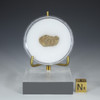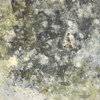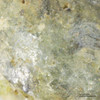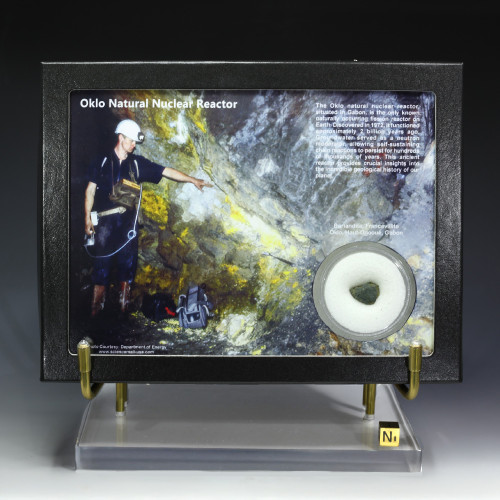Trinitite Glass: Green Black Minor Red Metal - 0.89 g
Brand : Jensan Scientifics LLC
- SKU:
- JPT-18892
- Condition:
- New
- Availability:
- Usually ships in 24 hours.
- Weight:
- 1.00 LBS
- Minimum Purchase:
- 1 unit
- Maximum Purchase:
- 1 unit
- Shipping:
- Calculated at Checkout
Trinitite Nuclear Glass Green: Unique Atomic History
Experience a piece of history with this rare Trinitite nuclear glass specimen, created during the first atomic bomb test at the Trinity site on July 16, 1945, near Alamogordo, New Mexico. The Trinity test was the world's first detonation of a plutonium bomb, overseen by Robert Oppenheimer, and it provided critical knowledge that led to the development of atomic bombs used in Hiroshima and Nagasaki, Japan.
Known as “blast glass” or “atomic glass,” this material was formed as a result of the extreme heat from the bomb detonated at ground level, which melted the desert sand and earth at the blast site, fusing them into glassy residues known as trinitite on the desert floor. The explosion also melted parts of the bomb's support structure, contributing to the unique forms and layers found in trinitite.
Also referred to as Atomite or Alamogordo Glass, Trinitite is a sought-after collectible for both scientific and historical purposes. The green color of trinitite has been compared to green jade, with some pieces displaying a splashy, star-like pattern. Trinitite is highly sought after by collectors interested in atomic history and rare geological materials. It contains trace amounts of radioactivity and radiation due to its origin in a nuclear explosion.
Green Trinitite: The Most Common Form
This particular specimen is green, black, minor red with metallic flakes. Legally collected in 1948, each piece comes with XRF verification, ensuring its authenticity. Photos of the front, back, and description tag are included with every order.
The Formation and Composition of Trinitite
Various types of Trinitite have been identified, each with its own unique characteristics. Green is the most common color, while black and red Trinitite often contain iron from the tower structure that held the bomb. Red Trinitite may also include copper from the "gadget" itself or from communication cables surrounding the test site. Steel, which is an alloy primarily composed of iron, also played a role in the formation of Trinitite due to its presence in the bomb tower and the "Jumbo" steel canister used during the test.
Authenticity and Compliance with U.S. Regulations
Our Trinitite has been tested and certified as authentic. We strictly comply with all U.S. Federal regulations, including Section 13 from part 40 of the NRC Nuclear Regulatory Commission rules and Postal Service regulations specified in 49 CFR 173.421 for low-level radioactive materials. Every order is shipped in accordance with these guidelines.
Product Specifications
- Size: 19mm X 11mm X 5mm D
- Weight: 0.89 grams
- Color: Green, Black, Minor Red, Metallic Flakes (see photos)
- Legally collected in 1948
- XRF Included; Microscope photos are 10X of this exact specimen.
Each order includes the plastic display disc, information, tag, tag stand, Certificate of Authenticity, and XRF. (Acrylic base and photo cube not included but are available on Amazon.)
Preservation and Care of Your Trinitite Specimen
Owning an authentic trinitite specimen is like holding a tangible piece of world history—formed from the intense heat of the first atomic bomb test at the Trinity site in New Mexico, this rare atomic glass is a direct link to the pivotal moment that ushered in the Atomic Age. To preserve the integrity and value of your trinitite sample, it’s essential to handle and store it with care.
When handling trinitite samples, always use protective gloves. This prevents oils and residues from your skin from affecting the glassy residue left by the nuclear explosion. While trinitite is only mildly radioactive and considered safe to handle, it’s wise to follow basic safety precautions: avoid inhaling or ingesting any particles, and wash your hands thoroughly after contact. These simple steps help maintain both your safety and the pristine condition of your specimen.
Proper storage is key to preserving your trinitite’s unique appearance and structure. Keep your trinitite sample in a cool, dry environment, away from direct sunlight. Prolonged exposure to intense heat or UV rays can degrade the glass, while moisture may cause bubbles or cracks to form in the material. For optimal protection, display your trinitite in a sealed glass case or container, which helps regulate temperature and humidity and shields the specimen from environmental contaminants.
When displaying your trinitite, avoid touching the surface directly. Even small amounts of oil from your fingers can leave marks or dull the glass’s natural luster. Using a display disc or stand, as included with your order, is an excellent way to showcase your piece of history while minimizing contact.
Authenticity is crucial when collecting trinitite. Always ensure your specimen comes with a Certificate of Authenticity. Collecting trinitite is a rewarding pursuit, but it is important to remember that only legally collected material should be acquired. Removing trinitite from the Trinity site or any nuclear test site without proper authorization is illegal.
By following these guidelines, you can ensure your trinitite remains a rare and valuable addition to your collection. Whether you’re a seasoned collector or new to the world of atomic age minerals, caring for your trinitite not only preserves its scientific and historical significance but also honors its role in the story of the first nuclear bomb, the dawn of the Atomic Age, and the legacy of World War II.
A Rare Addition to Your Geological Collection
This Trinitite specimen is a remarkable addition to any geological or historical collection. As a relic from one of the most significant events in human history, it serves as a reminder of the profound impact of the Trinity test. However, please note that this material is strictly for educational and scientific purposes and should not be inhaled, ingested, or worn as jewelry.
Get Multiple-Colored Trinitite Today
Add a unique piece of atomic history to your collection with this authentic Trinitite glass with multiple colors. Whether you're a collector, historian, or geology enthusiast, this specimen offers both educational value and historical significance.









